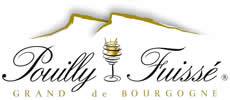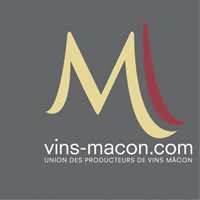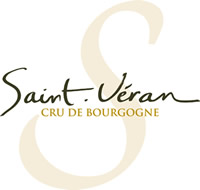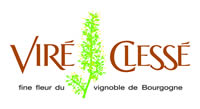The Mâcon AOC wines come together at the Grands Jours de Bourgogne
An association with a single vocation - to promote Mâcon AOC wines at the “Grands Jours de Bourgogne”.
The “Terroirs des Côtes Mâconnaises” association was created in 2003 with the objective of organising joint participation at the 2004 “Grands Jours de Bourgogne”.
This association aims to enable the official syndicates, who protect and promote the AOCs produced in the Mâcon region (Producers unions from POUILLY-FUISSE, MACON, SAINT VERAN, VIRE-CLESSE, POUILLY-VINZELLES & POUILLY-LOCHE), to work together at promotional events, such as the GRANDS JOURS DE BOURGOGNE, and to develop joint communication aimed at producers, trade buyers, opinion leaders and consumers.
Each appellation is of course represented on the Terroirs des Côtes Mâconnaises Board.
Contact :
Terroirs des Côtes Mâconnaises
UPVM
520, avenue de Lattre de Tassigny, 71000 MACON, France
Tel : +33 (0)3.85.38.20.86 - Fax : +33 (0)3.85.38.39.62
Email : symphoniemaconnaise@yahoo.fr
President of the Terroirs des Côtes Mâconnaises Association
MORAT Joëlle Pouilly-Fuissé
Terroirs des Côtes Mâconnaises Board members:
AUBINEL Jean-Michel Mâcon
GRANDJEAN Dany Mâcon
BOURDON Albert Pouilly-Loché & Pouilly-Vinzelles
De LOSTENDE Françoise Pouilly-Loché & Pouilly-Vinzelles
GENETIER Philippe Saint-Véran
NOUVEL Thierry Saint-Véran
THEVENET Jean Viré-Clessé
MICHEL Franck Viré-Clessé
Revenir en haut
Overview of the Mâcon wine region
Like all Burgundy wines, the wines from the Macon region are part of the finer things in life!
Their wide variety of aromas and flavours, and their broad range of appellations – Pouilly-Fuissé, Mâcon, Saint-Véran, Viré-Clessé Pouilly-Vinzelles, Pouilly-Loché –, will satisfy all Burgundy wine lovers.
Between the Saône and the Charolais regions, Mâcon winemakers play with the diversity of clay-limestone and granite soils, combined with the Chardonnay, Pinot Noir and Gamay grape varieties, to bring you the very best.
This is the secret of this South Burgundy region: tradition, know-how and authenticity coming together to produce high quality wines that lend themselves perfectly to today's lifestyles.
Produced primarily from Chardonnay, nearly two out of five bottles of Burgundy white wine come from the Mâcon region. These wines represent a complete and accessible range of styles, and are always founded on quality, whether the appellation is well known or less well known.
This diversity, combined with the work of the winemakers, produces wines suitable for every drinking occasion, every palate, and every requisite. In addition to the quality for which the wines are recognized, the Mâcon region boasts a number of fast growing terroirs which are revitalizing the Burgundy wine region.
Revenir en haut
Geographical location:
The Mâcon wine region marks the southern border of Burgundy. It sits within a large trapezoid area bounded by the towns of Mâcon, Cluny and Tournus.
Bordered to the east by the Saône Valley and to the west by the Grosne Valley, the wine producing region extends over a surface area which runs 35 Km in length, from Sennecey-le-Grand to Saint-Vérand, and 12 Km in width.
The landscape is shaped by a series of hills that rarely rise above 500 metres altitude.
Revenir en haut
Terroirs and Production
The terroirs
“In wine growing, it is a whole host of natural elements (geography, geology, soils, vegetation, climate) which, combined with human action, result in a specific product that cannot be replicated without these conditions.
The wine from the Mâcon region, as with all Burgundy wine, is the product of a complex association of distinctive geological, geographical, climatic, technical, cultural, historical and human conditions.”
Source BIVB
The climate in the Mâcon region is a continental climate with large temperature variations between seasons.
Spring frosts are always a threat right up to the middle of May, as are hailstorms in the summer months, particularly in June.
A long dry, sunny September helps the grapes to attain good maturity.
3 groups of soils can be distinguished:
-
- - Limestone, marl-limestone, marl-lime terrains : these alkaline soils are the best for the Chardonnay grape variety and produce original, fine Mâcon wines, capable of some ageing. The finest quality is found in the south, in the Pouilly-St Véran areas. These soils can also produce top quality Pinot Noir wines,
-
- - Clay or clay-siliceous terrains : these more acidic soils produce white wines for young drinking and pleasant Mâcon reds from the Gamay. These soils are often referred to as “Belouze”,
-
- - Siliceous terrains, on granite or volcanic subsoil: these terrains are typically found in the south of the region but are also located throughout the production area. They produce the finest red Mâcon wines because the Gamay is at its best on these soils.
Mâcon white wines are of great quality and richness due to this diversity of terroirs.
Production
The Mâcon wine region currently covers nearly 5800 ha compared to around 5,000 ha in 1998.
In the 2010/2011 campaign, the Mâcon region produced 342 660 hl, split between regional appellations (Mâcon, Mâcon-Villages and Mâcon + commune name) and communal appellations (Pouilly-Fuissé, Pouilly-Vinzelles, Pouilly-Loché, Saint-Véran and Viré-Clessé).
This represents 24% of Burgundy wine production.
The Mâcon regional appellation represents around 47 % of the surface area (red and white).
The communal appellations, St Véran, Pouilly-Fuissé, Pouilly-Loché, Pouilly-Vinzelles and Viré-Clessé, represent 26 % of the wine producing area.
Revenir en haut
History of the Mâcon wine region
312 : Eumenes’ speech describing the Burgundy wine region (the oldest known text).
6 August 1395 : Philip the Bold’s Order setting out the requirements for quality viticulture in Burgundy.
1416 : King Charles VI’s Edict defining the boundaries, from Sens to Mâcon, for the production of Burgundy wine.
11 November 1719 : The creation in Volnay of the oldest fraternal society known as “of Saint-Vincent” .
The introduction of Christianity from the early sixth century helped the spread of wine growing throughout the Mâcon region following the creation of large wine growing estates attached to the Abbey of Cluny.
Gamay was planted in the Mâcon wine region until the 18th century.
In the early 19th century, the Gamay grape variety was replaced by the Chardonnay which found itself on its favourite terrain in the Mâcon area.
Chardonnay currently represents over 80 % of the vineyard plantings.
Historically, Mâcon production has experienced controlled growth similar to that of Burgundy.
Nowadays, Mâcon wines, as they are accessible and represent good value for money, are particularly appreciated by a young, urban clientele.
The success of Mâcon wines would appear to be due to the fact that they are aligned with new wine drinking trends.
The wines are accessible to young drinkers and more experienced wine drinkers alike; they are fruity, easy to drink and perfect as an aperitif.
In addition, the diversity of the terroirs and the support of large, professional companies have amplified the success of these wines, helping to boost the dynamism and competitive position of Burgundy wines.
Presidents of the Mâcon region ODGs (protection and control organisations):
President AOC Pouilly-Fuissé
BURRIER Frédéric Marc
Atrium du Pouilly-Fuissé
71960 SOLUTRE POUILLY
President AOC Mâcon
AUBINEL Jean-Michel
520, avenue de Lattre de Tassigny
71000 MACON
President AOC Pouilly-Loché
et Pouilly-Vinzelles
BRET Jean-Philippe
Les Brosses
71960 DAVAYE
President AOC Saint-Véran
NOUVEL Thierry
Les Brosses
71960 DAVAYE
President AOC Viré-clessé
MONTBARBON Jacky
Place du tertre
Revenir en haut
Symphonie Mâconnaise 2012 Partners
The Mâcon appellations are particularly grateful to the following partner companies for their support of “Symphonie Mâconnais” 2012
Revenir en haut
Exhibitors at Symphonie Mâconnaise 2012
Liste des exposants
Revenir en haut





